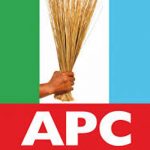
FOLLOWING controversies trailing load rejection issues in the power sector, the Electricity Distribution Companies (DisCos) at the weekend, again, faulted load rejection statistics given by the System Operators (SO), a part of the Transmission Company of Nigeria (TCN).
It also said that the natural drop in electricity demand by customers at night is not load rejection as perceived.
Spokesperson of the Association of Nigerian Electricity Distributors (ANED), the umbrella body of the DisCos, Barrister Sunday Oduntan in a statement issued in Abuja said TCN often misinterprets energy readings by miscalculating drop in electricity demand from customers at night as load rejection.
He explained that the DisCos’ stations have capacity that is higher than the energy allocation from the grid but often receive less as a result of transmission network.
“What has happened is the inaccurate rendering or misinterpretation by the System Operator (SO) of DisCos’ minimum and maximum load readings. The SO in its recent allegation of load rejection against DisCos wrongly projected the load drop/demand, during off-peak hours (night times) as load rejection.
“This is not, and cannot be labelled as load rejection by DisCos. Naturally, DisCos take and distribute more energy during the day time/business hours than night time when demand is generally low due to lesser demand. The unfair interpretation of off-peak energy data as load rejection is grossly inaccurate and misleading.
“The unfair interpretation of off-peak energy data as load rejection is grossly inaccurate and misleading. The occasional times DisCos have been unable to distribute energy received are directly due to the inadequate TCN infrastructural interface with the Discos,” he explained.
Oduntan hinted that the Distribution Stress Test reports of most DisCos revealed average Station Capacity Utilisation (SCU) of less than 50 per cent due to TCN infrastructural constraints.
He cited instances of Ibadan DisCo where about 803mw of its 1,538mw capacity is restricted due to TCN’s undersized 132kV line conductors at Ayede/Sagumu/Ijebu-Ode, aged indoor breakers and transformer capacity limitations (with over loaded transformers in Ibadan North and in Shagamu).
Oduntan who referred to the review of the National Control Centre (NCC)’s report for September 3, 2017 said transmission frequency constraints constituted the biggest impediment to the flow of energy for the DisCos.
“Of note are the DisCos’ legitimate concerns of TCN’s need to stop the indiscriminate load dumping to impractical network areas that make distribution inefficient, unviable and impracticable for technical and commercial efficiencies, due to poor infrastructure construction, substandard materials and inefficient reckless approvals of grid extensions for political considerations and interference during the days of NEPA/PHCN,” Oduntan noted in the statement.
The DisCos urged TCN to quickly upgrade its infrastructures to significantly reduce the forced outages it causes the DisCos and electricity consumers.
WATCH TOP VIDEOS FROM NIGERIAN TRIBUNE TV
- Relationship Hangout: Public vs Private Proposals – Which Truly Wins in Love?
- “No” Is a Complete Sentence: Why You Should Stop Feeling Guilty
- Relationship Hangout: Friendship Talk 2025 – How to Be a Good Friend & Big Questions on Friendship
- Police Overpower Armed Robbers in Ibadan After Fierce Struggle





